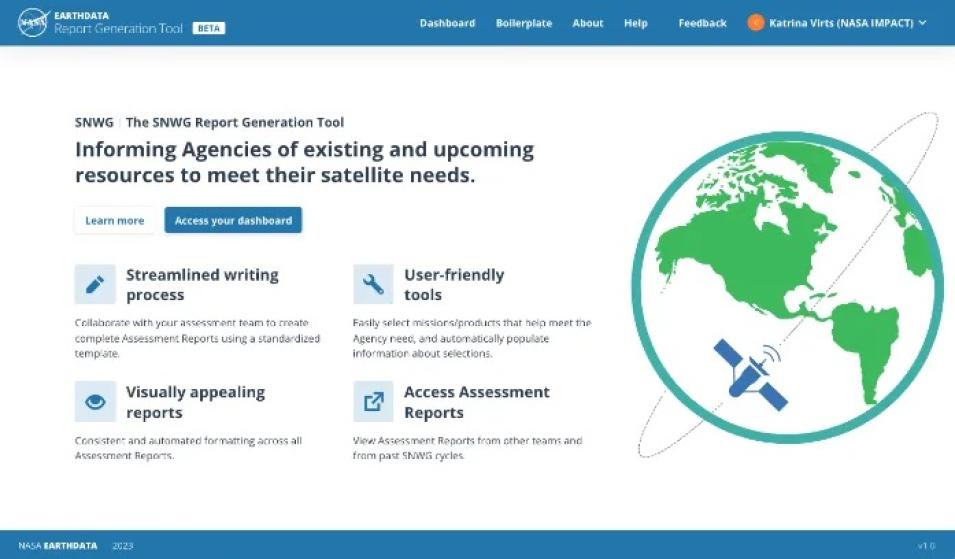Most of us are aware that satellites orbiting Earth collect vast amounts of information, which is then used to benefit life on the surface. Less commonly understood is how this information is distributed, and how potential users are informed about data that helps meet their needs. Through the Satellite Needs Working Group (SNWG) biennial assessment, NASA coordinates with other U.S. Government satellite data providers to identify, communicate, and address Earth observation needs of Federal agencies.
To streamline the process of organizing the information gathered through surveys and agency interviews, a team of researchers and developers from IMPACT and Development Seed created the Report Generation Tool (RGT). To learn more about the RGT, we interviewed IMPACT team members Katrina Virts (leader of the SNWG assessment team at the University of Alabama in Huntsville), systems engineer Jeanné le Roux, DCD (Data Curation and Discovery) team lead Jenny Wood, developer Iksha Gurung, and Development Seed product owner Will Rynearson.
The tool, known as the RGT, is based on the Algorithm Publication Tool’s (APT) framework. RGT provides an interface for SNWG assessment teams to collaboratively curate standardized reports. RGT provides access to databases with pre-curated data about satellite missions, instruments, commercial data products, and SNWG solution activities that can be easily selected and populated into the reports.
If this data needs to be updated, the RGT will automatically disseminate the updates across all SNWG existing reports, ensuring the report information is up-to-date and consistent. RGT’s ability to do these bulk report updates saves countless hours of effort when compared to managing the changes manually. Finally, the reports are exported in a polished and shareable format and are shared with the agencies who submitted surveys.
